
The antlions are a group of about 2,000 species of insect in the neuropteran family Myrmeleontidae. They are known for the predatory habits of their larvae, which mostly dig pits to trap passing ants or other prey. In North America, the larvae are sometimes referred to as doodlebugs because of the marks they leave in the sand. The adult insects are less well known due to their relatively short lifespans compared to the larvae. Adults, sometimes known as antlion lacewings, mostly fly at dusk or just after dark and may be mistakenly identified as dragonflies or damselflies.

Hemerobiidae is a family of Neuropteran insects commonly known as brown lacewings, comprising about 500 species in 28 genera. Most are yellow to dark brown, but some species are green. They are small; most have forewings 4–10 mm long. These insects differ from the somewhat similar Chrysopidae not only by the usual coloring but also by the wing venation: hemerobiids differ from chrysopids in having numerous long veins and forked costal cross veins. Some genera are widespread, but most are restricted to a single biogeographical realm. Some species have reduced wings to the degree that they are flightless. Imagines (adults) of subfamily Drepanepteryginae mimic dead leaves. Hemerobiid larvae are usually less hairy than chrysopid larvae.
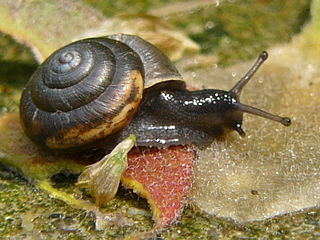
Hygromiidae is a taxonomic family of small to medium-sized air-breathing land snails, terrestrial pulmonate gastropod mollusks in the superfamily Helicoidea.

Alderflies are megalopteran insects of the family Sialidae. They are closely related to the dobsonflies and fishflies as well as to the prehistoric Euchauliodidae. All living alderflies – about 66 species all together – are part of the subfamily Sialinae, which contains between one and seven extant genera according to different scientists' views.

Inocelliidae is a small family of snakeflies containing 8 genera of which one is known only from fossils. They are commonly known as inocelliid snakeflies. The largest known species is Fibla carpenteri known from fossils found in baltic amber.

Chrysopinae is the nominate subfamily of green lacewings in the insect family Chrysopidae in the order Neuroptera. This subfamily is also the largest within the family and comprises about 60 genera.

Myrmeleontinae is a subfamily of Myrmeleontidae, the antlions.
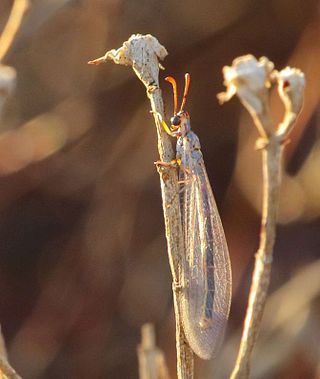
Myrmeleontini is an antlion tribe in the subfamily Myrmeleontinae.
Dendroleontinae is a subfamily of Myrmeleontidae, the antlions.
Dendroleontini is a tribe in the antlion subfamily Dendroleontinae.
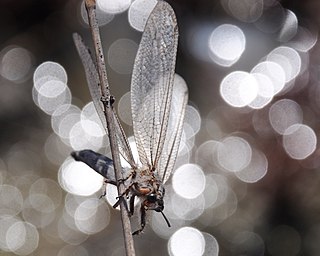
Acanthaclisini is a tribe in the antlion subfamily Acanthaclisinae.

The Nemoleontinae are a subfamily of ant-lions, erected by Nathan Banks in 1911.
Nemoleontini is an antlion tribe in the subfamily Myrmeleontinae.

Brachynemurini is a tribe of antlions in the family Myrmeleontidae. There are about 16 genera and at least 90 described species in Brachynemurini.
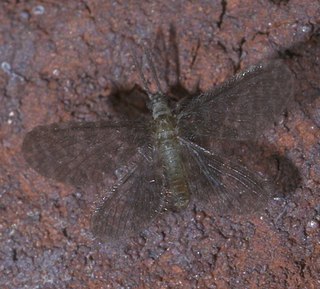
Nallachius is a genus of pleasing lacewings in the family Dilaridae. There are more than 20 described species in Nallachius.
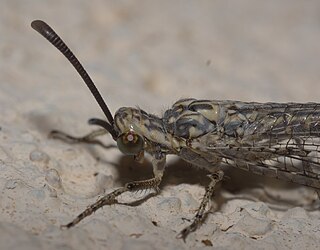
Scotoleon is a genus of antlions in the family Myrmeleontidae. There are more than 20 described species in Scotoleon.

Limnephilinae is a subfamily of northern caddisflies in the family Limnephilidae. There are at least 65 genera and 600 described species in Limnephilinae.

Apertochrysa is a genus of green lacewings in the family Chrysopidae. There are 183 described species in the genus.
Eremoleon is a genus of antlions belonging to the family Myrmeleontidae. The species of this genus are found from the southern United States to Central America.















